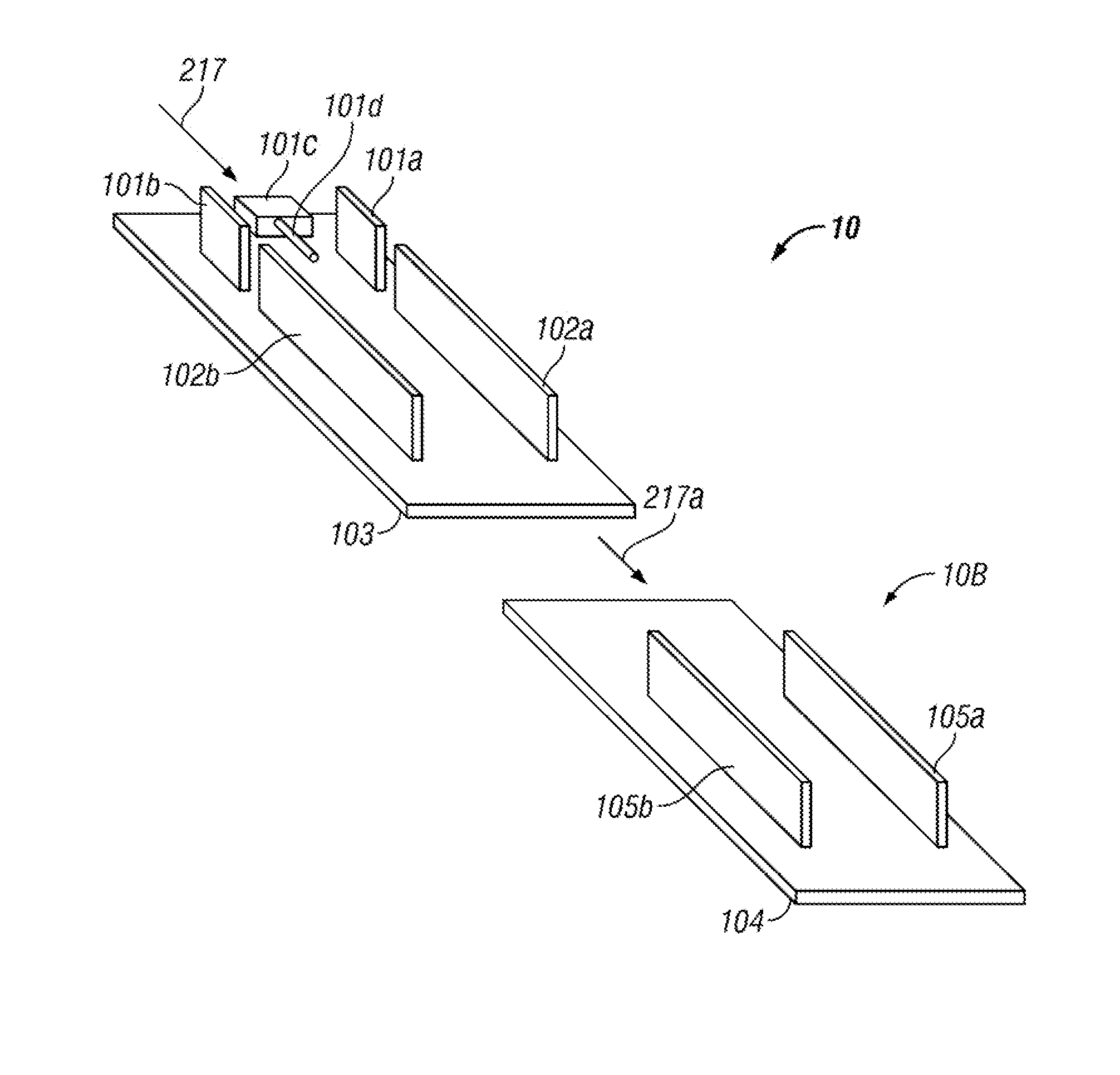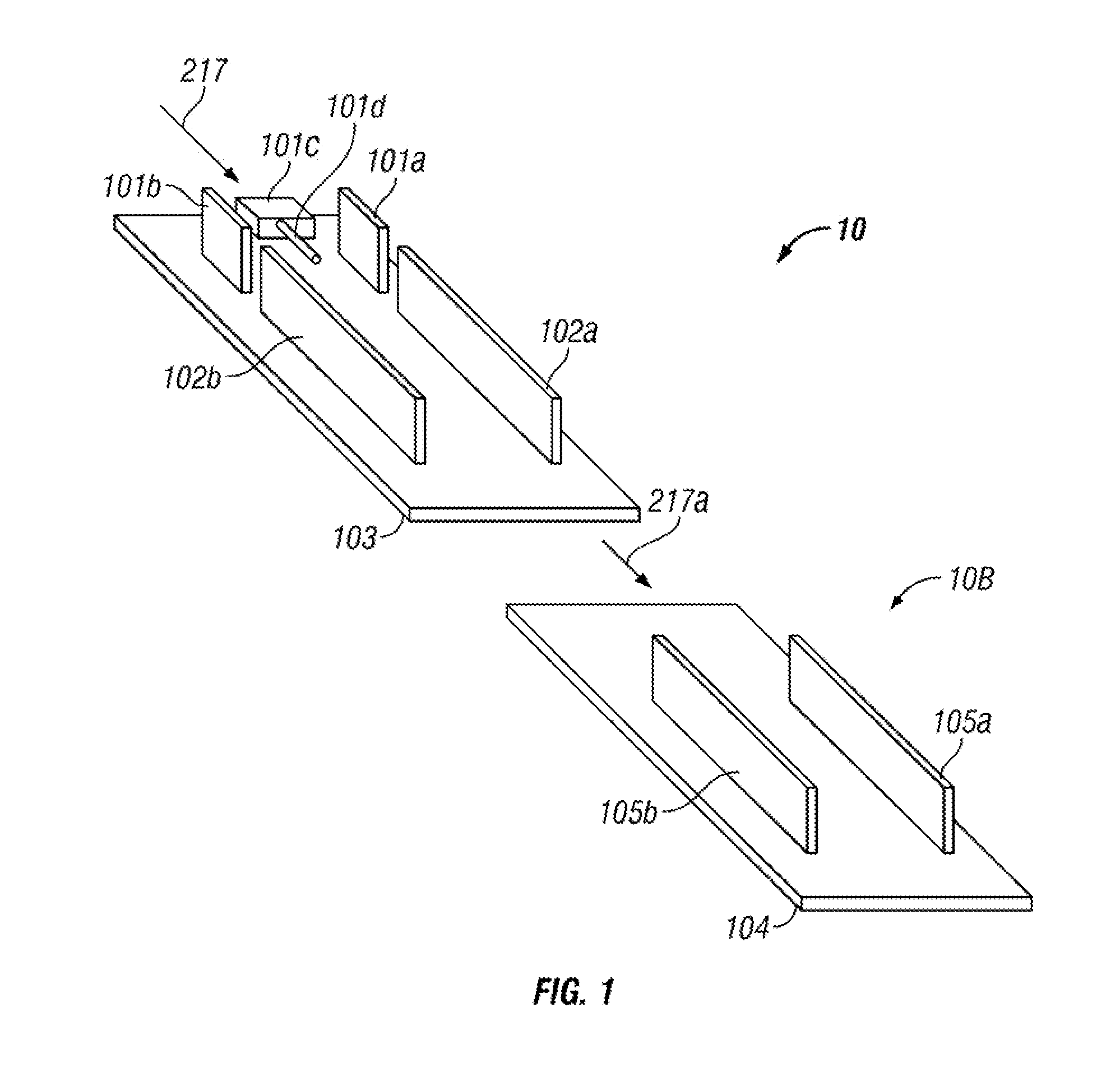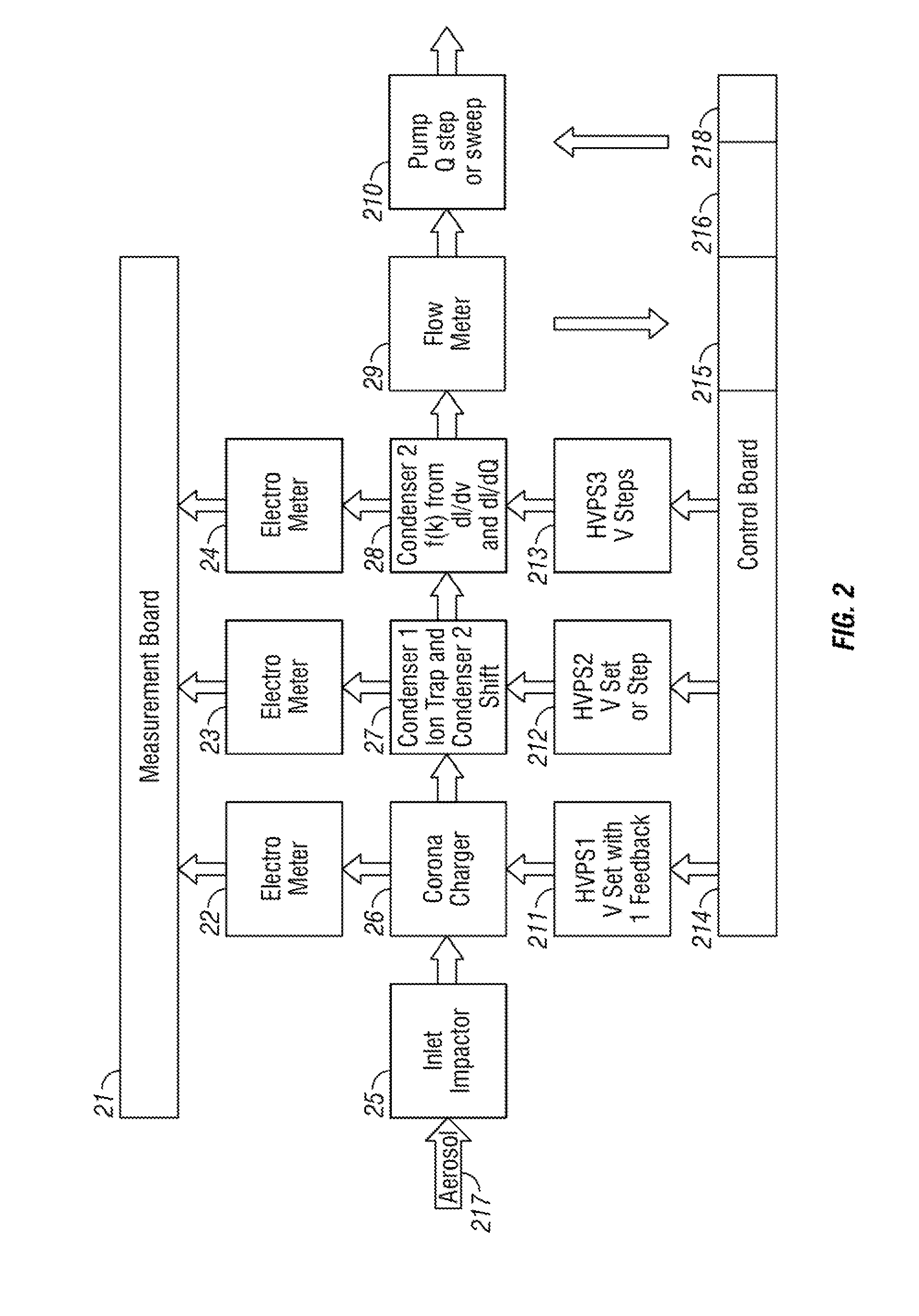Micro-fabricated double condenser method and apparatus for the measurement of number-size distribution of airborne nano-particles
a nano-particle and micro-fabricated technology, applied in the field of air pollution measurement, can solve the problems of not being able to accurately measure the emission of real-world vehicles, not being able to carry a portable instrument that can both, and other limitations of current systems for measuring engine exhaust particles, in particular ultrafine particles, to achieve the effect of effectively counting and sizing nano-particles
- Summary
- Abstract
- Description
- Claims
- Application Information
AI Technical Summary
Benefits of technology
Problems solved by technology
Method used
Image
Examples
Embodiment Construction
[0046]Referring still to FIG. 1 there is shown pictorial illustration of one embodiment of the miniaturized micro-fabricated double condenser 10 in accordance with the present invention. The components of the micro-fabricated corona ionizer are deposited on an insulating substrate 103. One possible material for insulating substrate 103 is glass; although it will be appreciated that any suitable insulating substrate may be used. Anchor 101 is deposited on substrate 103. A typical material for anchor 101 is copper; although it will be appreciated that any suitable anchoring material may be used. Grids 101a, 101b are suitably deposited and anchored on the substrate 103 such that they are parallel to probe 101d and equidistant from probe 101d. In this configuration, the corona ionizer forms a flow-through ionizer, which is useful for creating micro-fabricated particulate sensors.
[0047]Probe 101d is deposited with anchor 101c but is undercut so that it is suspended above substrate 103. T...
PUM
| Property | Measurement | Unit |
|---|---|---|
| particle sizes | aaaaa | aaaaa |
| diameters | aaaaa | aaaaa |
| diameter | aaaaa | aaaaa |
Abstract
Description
Claims
Application Information
 Login to View More
Login to View More - R&D
- Intellectual Property
- Life Sciences
- Materials
- Tech Scout
- Unparalleled Data Quality
- Higher Quality Content
- 60% Fewer Hallucinations
Browse by: Latest US Patents, China's latest patents, Technical Efficacy Thesaurus, Application Domain, Technology Topic, Popular Technical Reports.
© 2025 PatSnap. All rights reserved.Legal|Privacy policy|Modern Slavery Act Transparency Statement|Sitemap|About US| Contact US: help@patsnap.com



